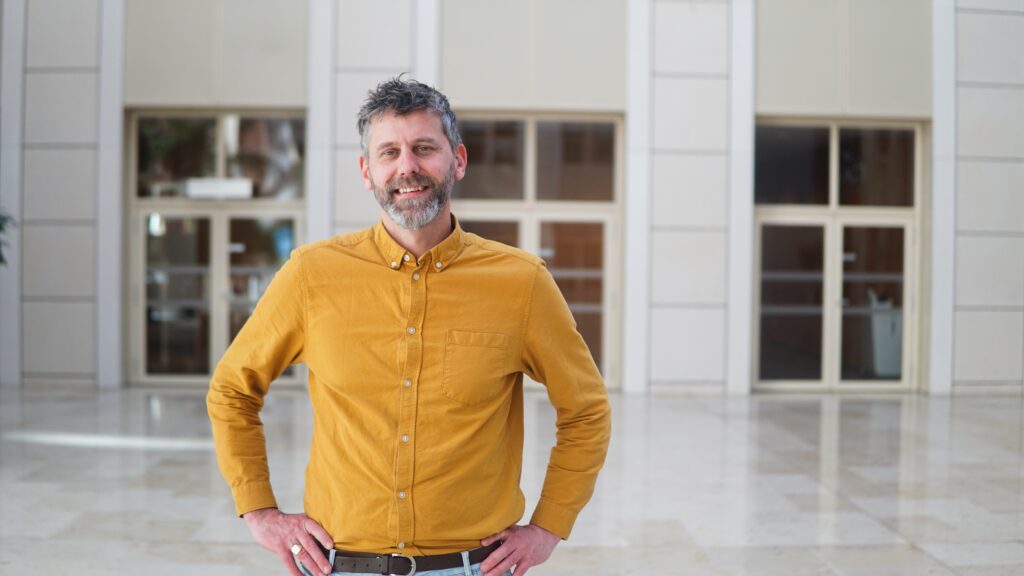Striving for data excellence: How the Netherlands’ TenderNed is enabling procurement insights for government and public users

In October, EU countries will be required to adopt eForms in a bid to improve the quality of data published on the block’s government tendering. To shed light on the value of having high-quality procurement data, we spoke to product owner Hans Minkes at TenderNed, the Dutch government’s online tendering system and one of the agencies furthest along in implementing eForms among the EU Member States.
Minkes leads a team that he says likes to “think outside of the box and change things within.” With data excellence as one of the pillars of their mission, TenderNed has been working on creating better data within the Dutch government for several years.
All Dutch authorities must publish their above-the-threshold tenders via the TenderNed platform, so businesses can access all public data and documents from a single webpage. Publication of below-the-threshold tenders is voluntary. About 55% of the tenders visible on the TenderNed platform are published from a dedicated TenderNed application, which contracting authorities can use to manage all steps of the tendering process. The rest come from commercial applications.
TenderNed has a special team dedicated to analyzing procurement trends and making their data more valuable. On TenderNed’s website, they regularly publish insights into key issues, such as the top 10 innovation-friendly public buyers, most common purchases (using CPV codes), and the substantial increase in hiring of consultancy firms. They are also working on tools to help contracting authorities to analyze their own data, for example, to monitor the average lead time of their tenders, or decide which award criteria to use when preparing a tender.
Often ensuring the data can be used for such calculations means talking directly with contracting authorities to encourage them to do better. For example, after TenderNed noticed a high percentage of contracting procedures in the database had unrealistic award values, they activated their “team of e-procurement influencers” – external e-procurement experts with a large follower base. They used the data to address specific agencies, and posted about it on LinkedIn. This encouragement led to a big drop in procedures published with unrealistic values, from 44% in 2022 to 36% in the first months of 2023.
In 2022, TenderNed also turned their attention to creating better quality data for external users and making it easily accessible for researchers, journalists, and agencies. Transparency is key. The team made their public dataset available in the Open Contracting Data Standard (or OCDS) format – an improvement that makes it easier for public users to analyze and compare the Dutch data with tender data of other governments.
“When we learned of the Open Contracting Data Standard, we thought that by implementing it we can make our data more accessible internationally and follow best practice standards,” says Minkes.

Public data services can now use the OCDS data to easily calculate indicators that are most important to their clients, for example, potential suppliers who might be interested in knowing which contracting authorities have a track record of working with small businesses, or academics studying the prevalence of non-competitive tendering in different countries.
“We noticed the added value of making our data more publicly available, not only in the Netherlands but also outside of the country, for platforms that aggregate and compare contracting data across countries, particularly across the EU. We want people to use our data, because it is more accurate, validated data. Our new JSON files enable better analysis by external data user,” says Minkes.
The OCDS publication provides data from 2016 from the tender and award stages of the contracting cycle. In total, more than 131,000 tenders are published. The data includes 123 fields, which can be used to calculate more than 51 procurement indicators related to market opportunities (competition, supplier performance), public integrity, value for money, internal efficiency and inclusion. For example, the number and total value awarded to small and medium enterprises (SMEs) can be calculated with the data, as well as competition metrics such as the proportion of single bid tenders or the number of procedures by procurement method.
If you want to explore the dataset, you can download it from OCP’s Data Registry and see the indicators that can be calculated on this table.
Besides core fields, TenderNed uses some of the recommended extensions as well, including lots and bid statistics and details.
Minkes shares some advice for others interested in publishing open data:
What we think is important is when you share open data, give instructions on how to read it. It is so easy to make a wrong interpretation of the data. Don’t just throw it out there.
What’s next
TenderNed is focused on implementing eForms and is one of the furthest along this journey among the EU Member States. New demos are released every two weeks. In the long term, they plan to publish eForms data in OCDS format too. (Visit OCP’s blog for more on how OCDS complements eForms).
The Netherlands has been a key actor in moving forward open contracting in Europe and a champion for implementing sustainable procurement practices as host of the inaugural 2022 Open and Sustainable Public Procurement in Europe conference and co-host of this year’s edition.
As Andre Weimar, Director for Procurement, Facilities and Housing Policies puts it:
From ballpoints to computers, cars to energy and to catering, impact is key. Environment, people and society have to profit from it! Good data is critical to implementing better policy decisions and achieving impact.
As the EU leader in sustainability and digitization, many eyes are on the Netherlands to develop a compelling open and sustainable procurement vision that would employ technology and data to make procurement work for people and the planet. OCP hopes to help the Dutch government in creating and implementing that vision.